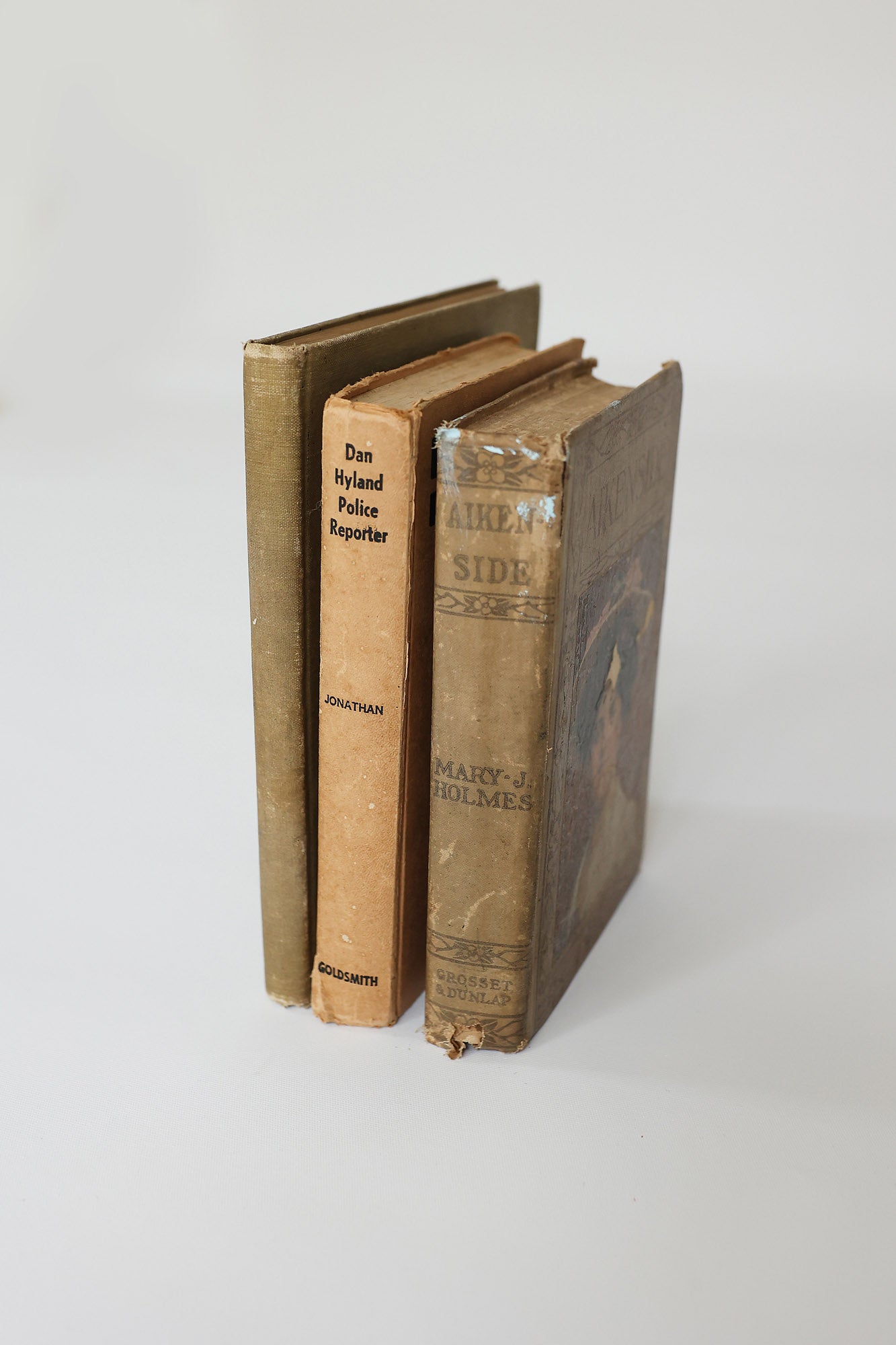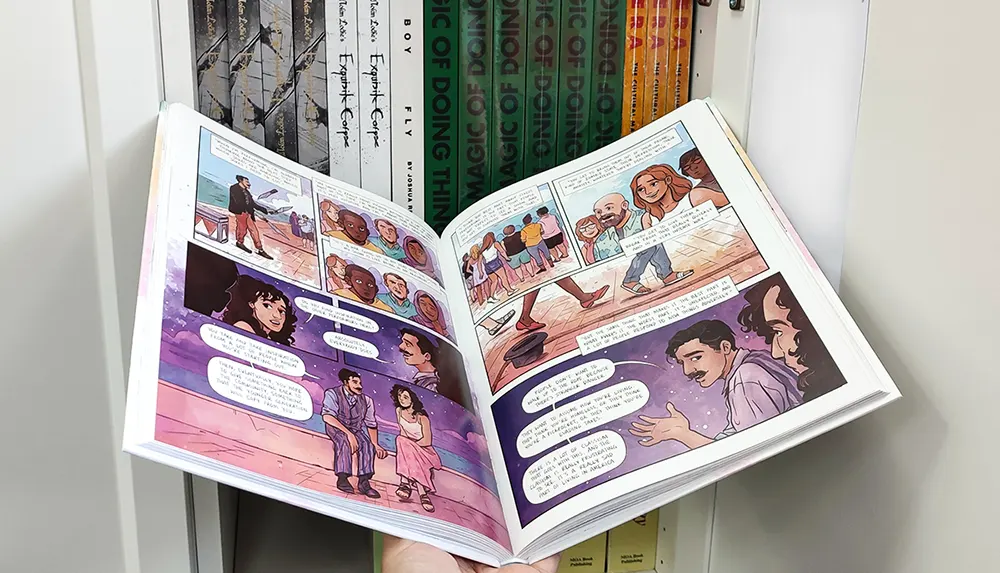Hardcover Books That Belong on Your Living Room Display
Wiki Article
A Comprehensive Overview to the Refine of Hardbound Books Printing
When you begin the journey of hardcover book printing, comprehending the entire procedure is crucial. As you browse with binding and high quality control, you'll find that every choice impacts the publication's general allure.Comprehending the Hardcover Publication Structure
When you explore the globe of hardbound books, you'll swiftly see that their structure is unique and willful. You'll locate a fabric or leather treatment, which not just enhances looks yet also adds to the publication's long life.The text block itself contains several trademarks, or folded sheets, stitched with each other for toughness. You'll see that the spine is strengthened, enabling a smooth lay-flat reading experience - hardcover books. Additionally, guide's weight typically shares a feeling of top quality and permanence
Hardcover books normally include a dirt coat, which serves as an advertising and marketing device while protecting the cover. Comprehending these components helps you appreciate the craftsmanship behind hardcover publications and their one-of-a-kind charm in the literary world.
Manuscript Preparation and Modifying
Getting your manuscript prepared for printing is important, and it begins with appropriate format guidelines. You'll require to recognize the editing and enhancing process to fine-tune your job and guarantee it reverberates with visitors. And also, mastering proofreading techniques can help you capture those bothersome errors prior to your book goes to print.
Manuscript Format Standards
Appropriate manuscript formatting is necessary for creating a professional-looking hardbound book. Beginning by choosing a common typeface like Times New Roman or Arial in 12-point size. Usage double-spacing throughout the record to enhance readability. Establish your margins to 1 inch on all sides, offering your text space to take a breath. Number your web pages in the top right corner, and include your phase titles at the beginning of each brand-new area. Use clear headings to suggest areas, and stay clear of excessive format like bold or italics unless necessary. Ensure to check your manuscript for uniformity in vogue, guaranteeing that whatever from punctuation to spacing complies with your picked standards. Following these steps will certainly set a strong foundation for your book.Editing Refine Basics
Editing your manuscript is an important step that can change it from an outline right into a polished final product. Begin by reading through your work critically, concentrating on circulation, structure, and clearness. Try to find variances in your narrative, personality advancement, or argumentation. It's useful to take breaks in between rounds of editing and enhancing to obtain fresh viewpoints. Don't wait to cut unnecessary web content or rephrase awkward sentences; this will certainly boost readability. Consider looking for responses from relied on peers or professional editors who can offer valuable understandings. Keep in mind, modifying isn't nearly dealing with errors; it's concerning fine-tuning your voice and ensuring your message reverberates with readers. Accept the process, and you'll see your manuscript shine.Proofreading Techniques Overview
Once you've polished your manuscript through modifying, the following step is to guarantee it's cost-free of mistakes that can distract visitors. Begin by taking a break after editing and enhancing; fresh eyes capture errors better. Read your manuscript aloud-- this assists you listen to awkward wording and place typos. Usage electronic devices like spell checkers for initial scans, yet don't rely exclusively on them. Take into consideration publishing your manuscript; reading theoretically can expose mistakes that displays miss. Concentrate on one type of mistake at once, whether it's spelling or grammar, to avoid feeling overwhelmed. Ultimately, get a trusted close friend or specialist proofreader to offer a fresh perspective. Their responses can highlight issues you may neglect.Designing the Book Cover and Inside
When you're developing your book cover and inside, you'll intend to concentrate on essential design aspects that capture your target market's focus. Selecting the right typography designs and very carefully choosing shades and imagery can make all the difference in sharing your book's style. Allow's discover exactly how these options can boost your work and attract readers.Important Layout Components
Creating an appealing book cover and a properly designed interior is vital for bring in visitors and improving their experience. Beginning with the cover; it's your impression. Choose shades and images that reflect your book's style and state of mind. Make certain your title stands out and is legible, even in thumbnail dimension.For the interior, concentrate on format and white room. A clean, organized design helps visitors browse effortlessly. Consider making use of phase headings and subheadings to assist them with the material. Aesthetic elements, like images or graphics, can also enhance interaction yet should enhance the message, not overwhelm it. Bear in mind, a natural style throughout your book promotes a professional look that can substantially impact a viewers's choice to choose it up.
Selecting Typography Designs
Typography plays an important function in both guide cover and indoor layout, shaping how readers regard your material. When choosing typography styles, consider your publication's genre and target market. A traditional serif typeface might function well for literary fiction, while a modern sans-serif might match a modern story. Warranty readability; your message needs to be easy on the eyes, specifically for longer passages. Pay focus to font size and line spacing, as these elements impact overall flow. Blending typefaces can add interest, however restrict it to two or 3 to preserve coherence. Lastly, consider pecking order-- make use of various styles for headings and body message to assist readers easily through your work. Your typography choices will considerably impact the reader's experience.Shade and Images Choice
Picking the ideal colors and images is essential for catching readers' focus and sharing your publication's themes. Start by considering your style; dynamic shades may function for a children's publication, while muted tones fit an enigma story. hardcover books. Usage images that reverberates with your content-- photos, pictures, or abstract layouts can boost your messageWhen making the cover, make certain the images does not overwhelm the title and author's name; clarity is crucial. This natural approach not only raises your book's visual however likewise enhances the reader's experience, making it a lot more unforgettable.
Choosing the Right Paper and Products
When picking paper and products for your hardcover book, it's important to ponder just how they'll affect the general look and feel of your job. Begin by picking the right paper weight; heavier stock often conveys high quality and resilience, while lighter paper can develop an extra fragile touch. Think about the surface as well; glossy paper enhances shades and photos, while matte can provide an innovative, downplayed look.Don't forget the cover products. Fabric, natural leather, great site or printed paper can establish the tone for your book. If your project includes images, choose acid-free paper to avoid yellowing in time. In addition, consider the binding products; making use of high-grade sticky guarantees your publication lasts.
Ultimately, the selections you make here reflect your vision, so take the time to example different products (hardcover books). Your options will aid produce a book that's not only visually appealing but practical and likewise resilient
The Printing Process: Methods and Technologies
A range of printing methods and technologies can bring your hardbound publication to life, each offering unique benefits. Digital printing is a prominent option for short runs, permitting quick turnaround and cost-effective solutions. It's best when you need to publish smaller sized quantities without giving up high quality. On the various other hand, offset printing excels in generating huge volumes, supplying consistent and premium outcomes. This method is suitable for extensive publications where shade precision and fine details matter.Recognizing these methods helps you make educated choices, ensuring your hardcover book not just looks wonderful yet likewise satisfies your production needs properly. Pick the right method to raise your publication's charm and effect.
Binding Techniques for Hardcover Books
Numerous binding approaches can transform your hardbound publication into a durable and eye-catching item. One prominent option holds true binding technique, where the web pages are stitched and afterwards connected to a tight cover. This supplies outstanding durability and a specialist look. An additional technique is the perfect binding, which utilizes glue to hold the web pages together, enabling a sleek spinal column but much less resilience compared to instance binding.You may likewise take into consideration spiral binding, which allows your book to lay flat, making it suitable for guidebooks or workbooks. Each binding approach has its benefits and fits different demands, so think about your book's purpose and target market when choosing the finest alternative for your project.
Quality Assurance and Last Touches
After picking the right binding technique for your hardbound book, quality control becomes necessary to verify your final product meets your expectations. Beginning by evaluating the published web pages for any type of errors or inconsistencies in shade and layout. You do not wish to miss out on any typos or misprints that might affect your readers' experience.Following, examine the binding stability. Confirm the web pages are safely connected and that the back is strong. A well-bound book not just looks specialist however also really feels sturdy in your hands.
Furthermore, focus on the cover. Look for any kind of scuff marks or misalignments in the artwork. If you have actually gone with special coatings like embossing or aluminum foil stamping, description make certain they're applied consistently throughout all copies.
Finally, carry out a thorough examination of the whole set before relocating to circulation. This method, you can confirm that every publication shows your high requirements.
Frequently Asked Inquiries
For how long Does the Hardcover Publication Printing Refine Generally Take?

What Is the Minimum Order Amount for Hardbound Books?
The minimum order quantity for hardcover books usually begin around 100 duplicates, however it can vary based on the printer. You need to contact your picked printing solution for their particular requirements and pricing.
Can I Publish Hardcover Books in Custom-made Sizes?
Yes, you can publish hardcover books in customized dimensions. Several printing services offer versatility with dimensions, enabling you Continue to select a style that fits your job. Simply validate the requirements prior to positioning your order.
Exist Eco-Friendly Options for Hardbound Publication Printing?
Yes, you can locate environment-friendly choices for hardbound book printing. Lots of business utilize sustainable inks and recycled materials. Just ask your printer about their green practices to ensure your job lines up with your ecological worths.What Are the Costs Related To Hardcover Publication Printing?
When taking into consideration hardcover publication printing expenses, you'll require to consider materials, layout, and printing techniques. Additional expenditures like delivery and binding can likewise impact your total budget, so strategy accordingly for your job.When you start the journey of hardbound book printing, recognizing the entire procedure is vital.A range of printing strategies and innovations can bring your hardbound book to life, each offering special benefits. Exactly how Lengthy Does the Hardcover Book Printing Refine Generally Take?
The hardbound publication printing process normally takes around 2 to 6 weeks.Yes, you can find eco-friendly choices for hardcover publication printing.
Report this wiki page